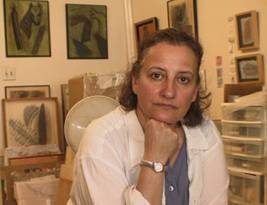Bertha Shenker is a Montreal artist who studied at the Vancouver School of Art in Vancouver, British Columbia, and at Concordia University in Montreal, Quebec, where she obtained a Bachelor’s and Master’s degree in Fine Arts. After extensive travels all over Canada, including Canada’s far north, Europe, Israel, and Australia, she now lives and works in Montreal.
Ms. Shenker has taken part in many solo and group exhibitions in Quebec, Ontario, and internationally in France, Australia, and Korea. Several articles have been published on her work in newspapers, art magazines, and in catalogues. Her works are included in collections both in Canada and abroad. She was a teacher of drawing and painting for fifteen years at the Saidye Bronfman Centre of the Arts in Montreal until it closed in 2007.
Artist’s Statement
My works Illustrate the paradox of simplicity and complexity: how everything can be both simple and complex. My inspiration for simple reduced forms, whether figurative or abstract, comes from sources as diverse as Byzantine mosaics, Medieval temperas, and folk art carvings.
Working primarily in series, I focus on the theme at hand, be it simple portraits, unadorned nature, small plaster panels of animal imagery, large abstract mixed media canvasses of symbolic shapes representing contemporary issues, or more recently working with large paper scrolls. From the personal to the universal, the humorous to the serious, my work encompasses the complexity of living in our times – through simplicity.

